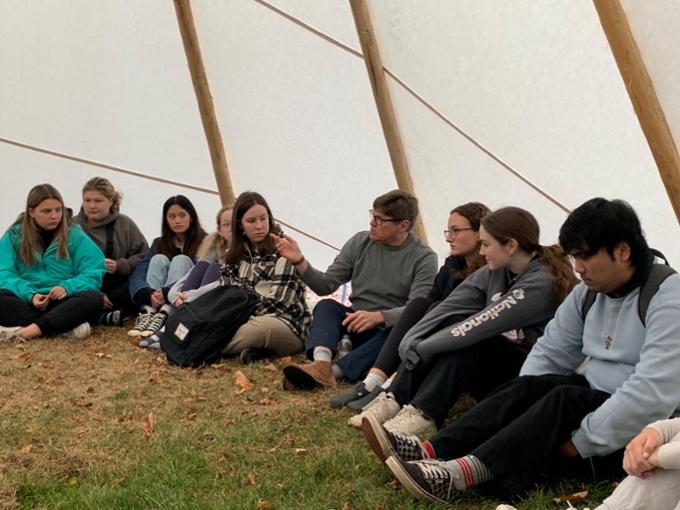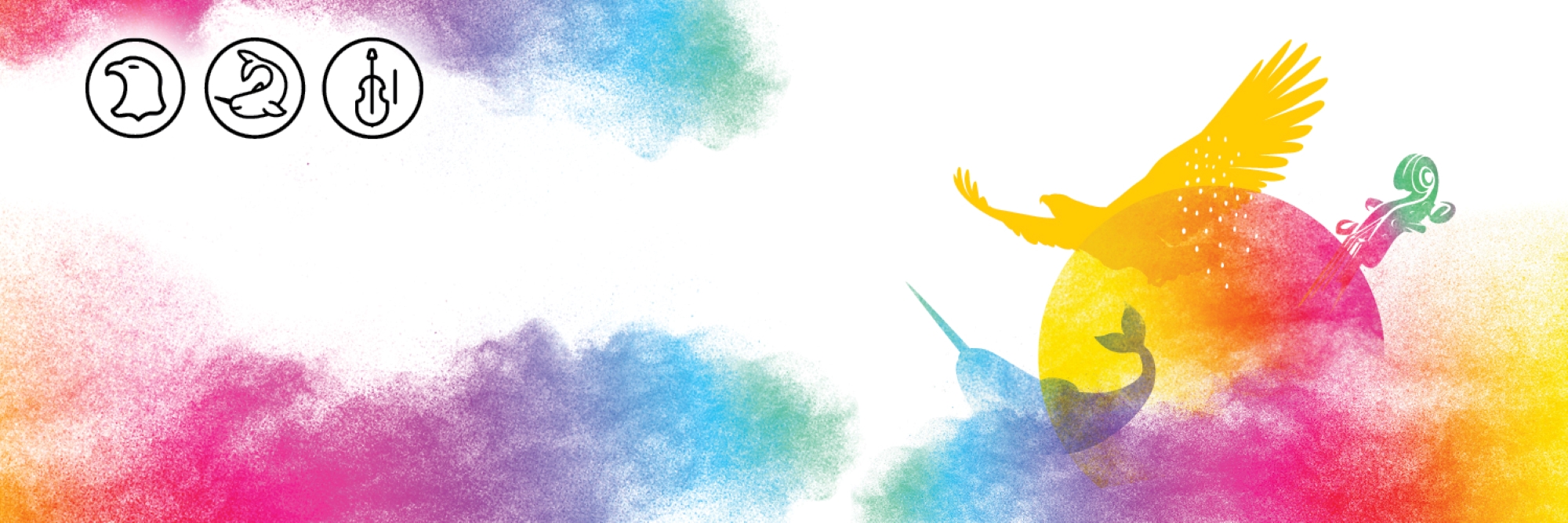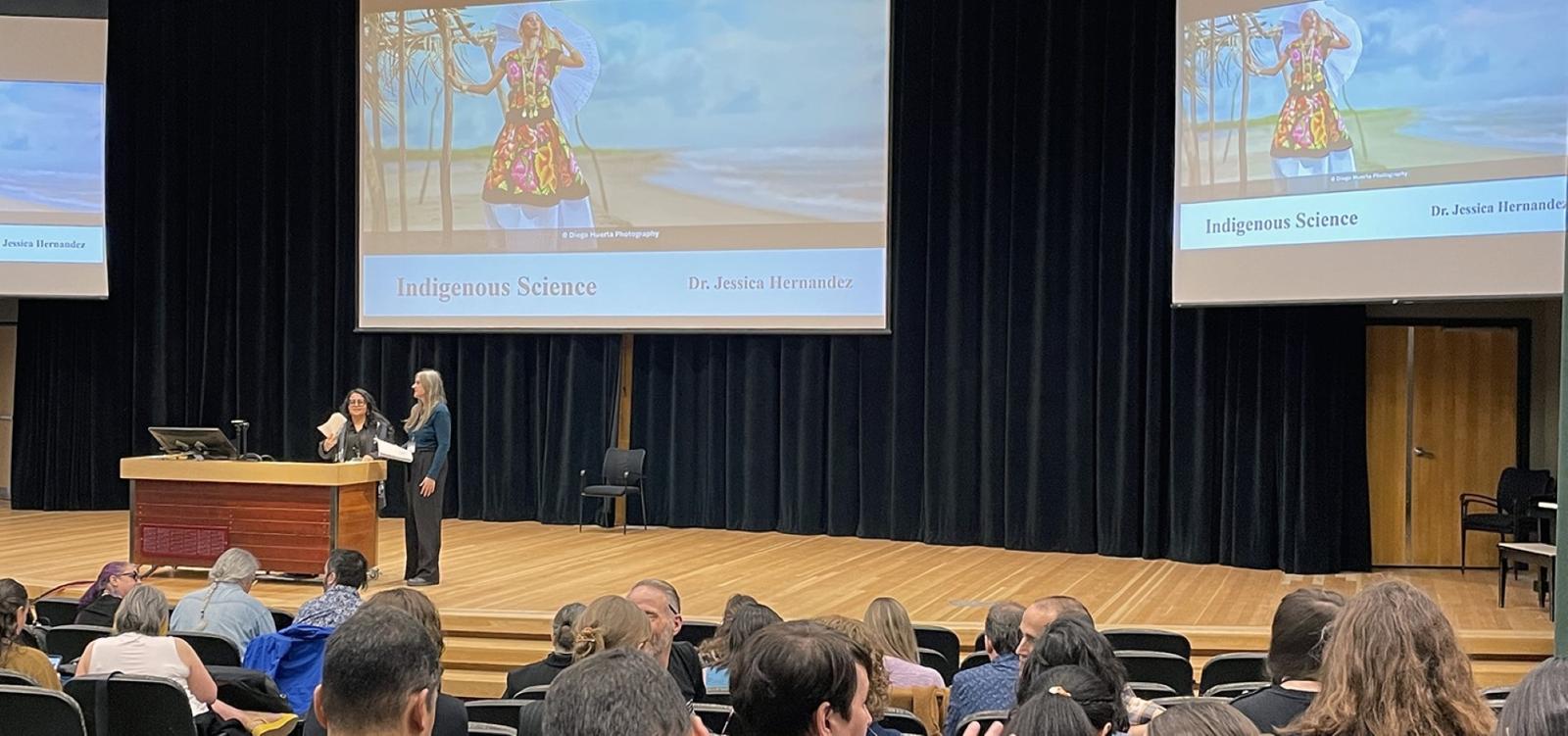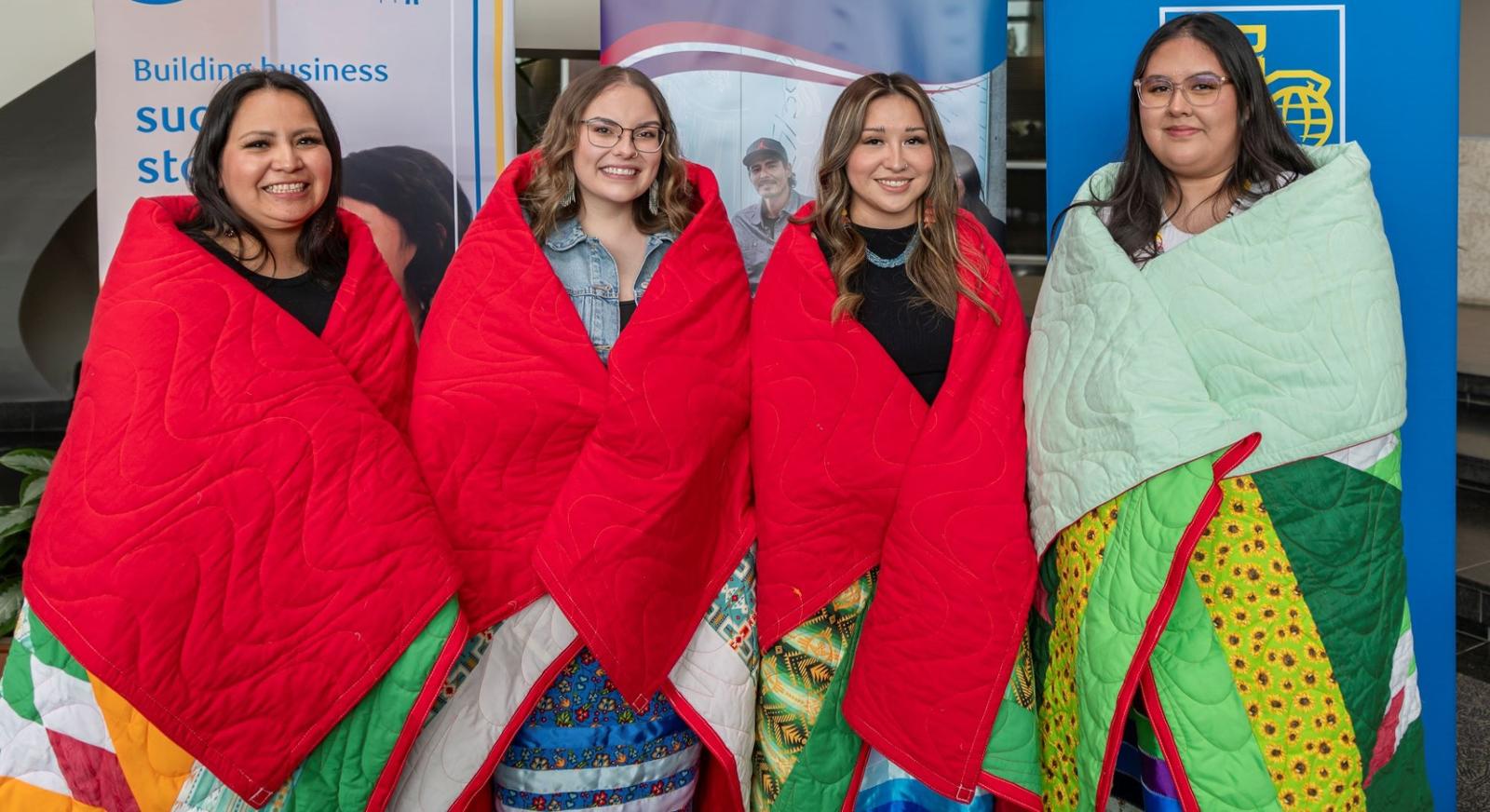The outdoor tipi classroom is a passion project three years in the making for Dr. Anna-Leah King, an Associate Professor, Chair of Indigenization in the Faculty of Education, and an Anishnaabe woman from the Island of the Great Spirit (Manitoulin Island).
In 2020, prior to the COVID pandemic, King worked closely with Knowledge Keeper Joseph Naytowhow and the now retired Dr. Patrick Lewis, former Associate Dean of Faculty Development and Human Resources within the Faculty of Education, to seek approval for the tipi and arrange its construction.
A step on the road to reconciliation
The tipi project is one way the Faculty of Education aims to make land-based and Indigenous culture learning opportunities readily accessible to the U of R community.
“To First Nations people, land-based education is inherent in our worldview, culture, and languages. Holding class in the tipi and gathering in a circle can be a starting place for many – a welcoming place - encouraging visitors as they take a step towards entering our world and beginning to understand,” explains King.
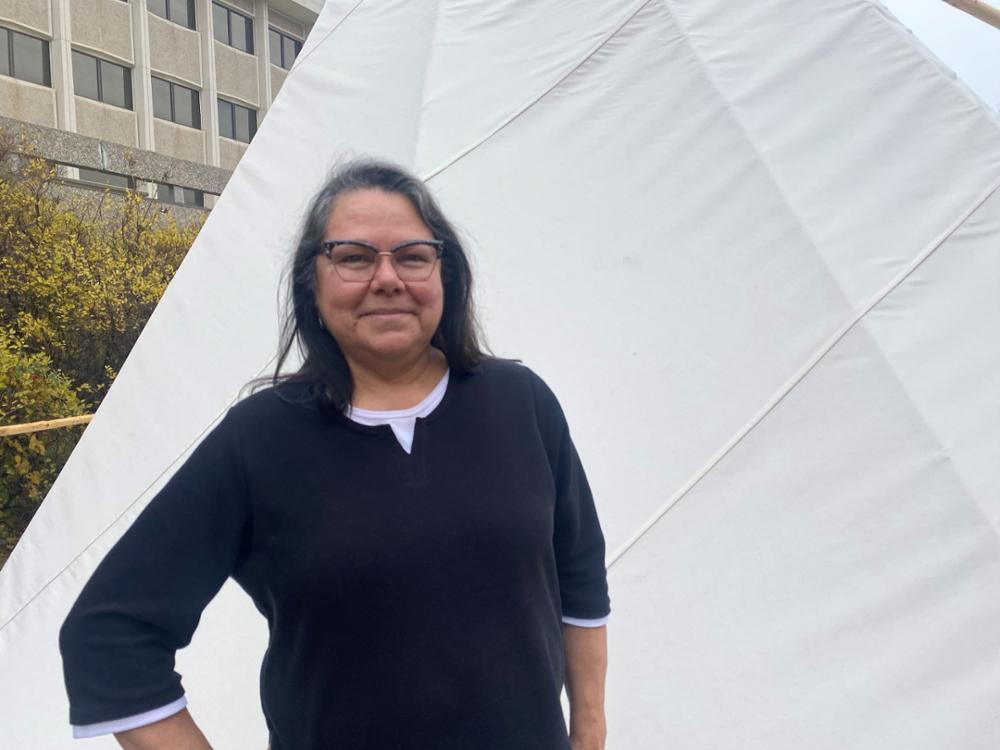
Following ceremonial protocol, members from the Faculty of Education, students, and invited guests helped raise the tipi in early October. The initial offering of tobacco was followed by a pipe ceremony held by kêhtê-ayak, or Knowledge Keepers, May Desnomie, a Woodland Cree from Peter Ballantyne First Nation, and Tim Poitras of Muscowpetung First Nation. Alma Poitras, former kêhtê-ayak in residence, was invited to bring her pipe. Knowledge Keeper Joseph Naytohow from Saskatoon also attended. Guided by Jasmin Albert, who was taught how to raise a tipi by her kokum Mary Lee, the group worked together to raise the tipi classroom.
Don’t be shy – visitors are welcome
At 75 feet in diameter, the tipi is designed to be large enough for an entire class and for future Faculty of Education gatherings. King says the tipi classroom is meant to be a welcoming space for everyone and that you don’t have to be concerned about ceremonial protocol when taking a class or just visiting the tipi.
It is King’s hope that everyone feels comfortable to drop by and go inside when there is no class in session.
“Don’t be shy. We want you to experience Indigenous culture firsthand and not worry about making mistakes. It is my hope anyone who drops by feels a sense of peace and connection to the earth,” encourages King.
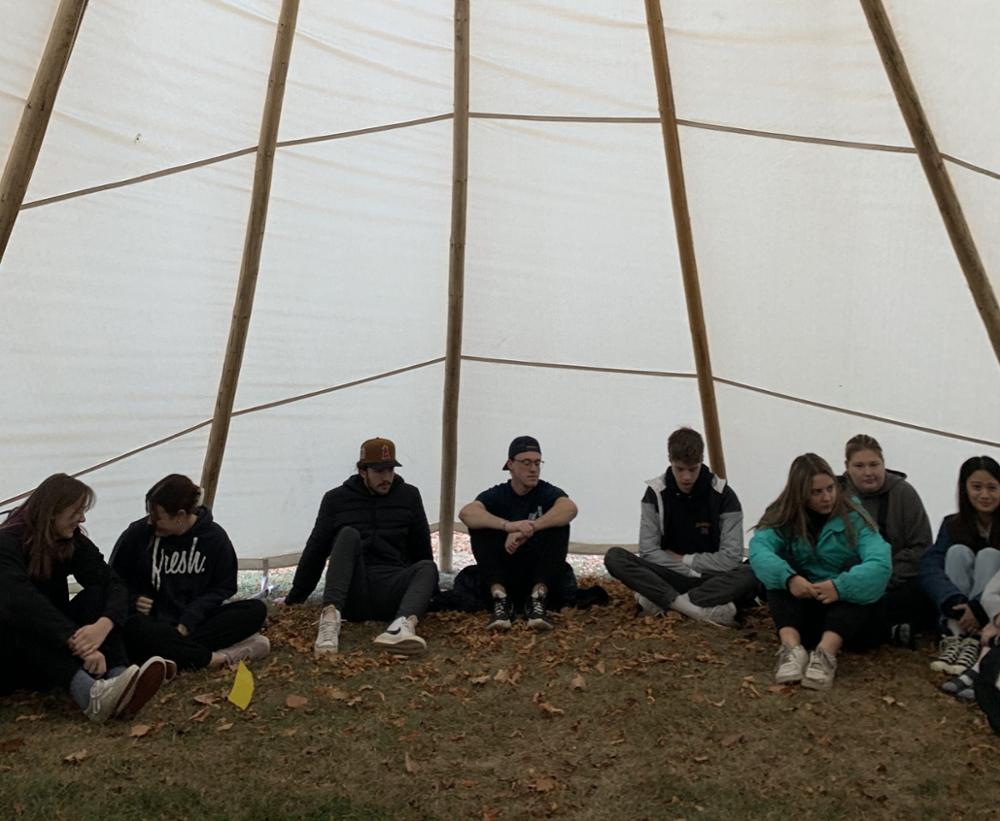
During class, students are encouraged to sit on the ground in a circle. For larger classes of up to 50 people, students sit in two circles, one inside the other. Professors from every faculty have been encouraged to book the classroom online before bringing students to the space.
Symbolic of the hoops of life
“The natural circle formation of the tipi and students seated in a circle is symbolic of the many hoops of life such as governing. In our worldview, understanding the cycles of life, the laws of circular interaction, and our interdependence with all our relations is essential to our survival,” shares King.
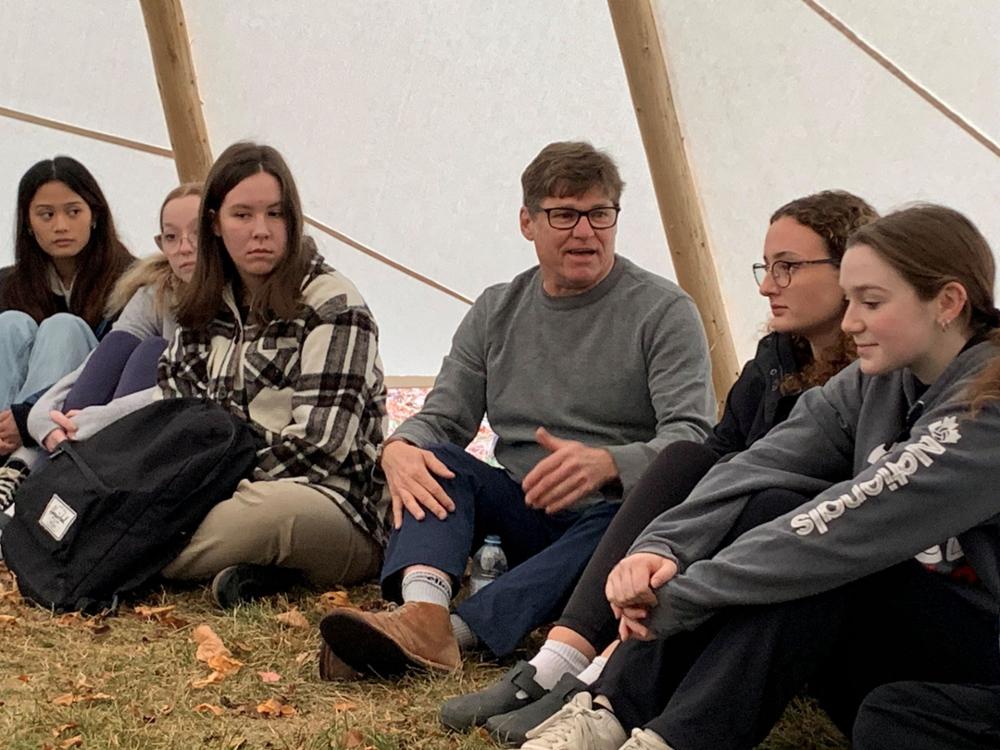
It just seems right that Dr. James Daschuk, Associate Professor in the Faculty of Kinesiology and Health Studies, and author of the best-selling book, Clearing the Plains, was the first faculty member to teach a class in the tipi. Students in Education for Justice: Knowledge, Schooling, and Society, and Introduction to Teaching Physical Education classes are also set to experience learning within the tipi.
Find out more about the Faculty of Education at the U of R.
While the tipi classroom precedes the October 2023 launch of Tapwewin kwayaskwastâsowin or Truth and Putting Things Right, the U of R’s Indigenous Engagement Strategic Plan, it supports and brings to life one of the Plan’s main themes - Spaces and Places – and its main objective to promote and facilitate welcoming and inclusive cultural spaces.
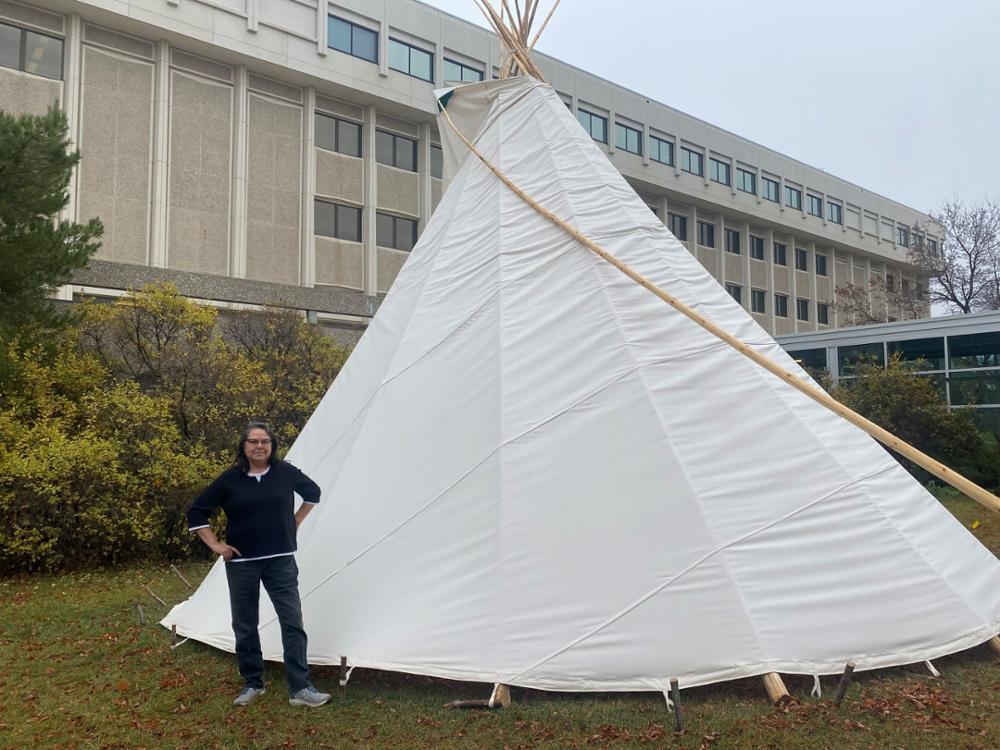
With winter clearly settling in and without a heater or floor, the tipi classroom will be carefully packed away by November, to be raised next spring ready to welcome students and staff once more.
Banner Credit: University Communications and Marketing
About the University of Regina
Set in the heart of the Canadian prairies we are a comprehensive, mid-sized university where the opportunities are as limitless as the horizon. Our campuses are on Treaty 4 and 6 - the territories of the nêhiyawak, Anihšināpēk, Dakota, Lakota, and Nakoda peoples, and the homeland of the Michif/Métis nation. It is our responsibility to strengthen relationships with Indigenous communities to build a more inclusive future for all. Our three federated colleges, 10 faculties, 25 academic departments, and 18 research centres foster innovative research with practical and theoretical applications. We are committed to cultivating the potential of our 16,000 students and supporting their health and well-being. We take learning beyond the classroom through work and volunteer experiences to develop career-ready graduates.
Let’s go far, together.
